XML threat protection Policy
 Nainaz
Nainaz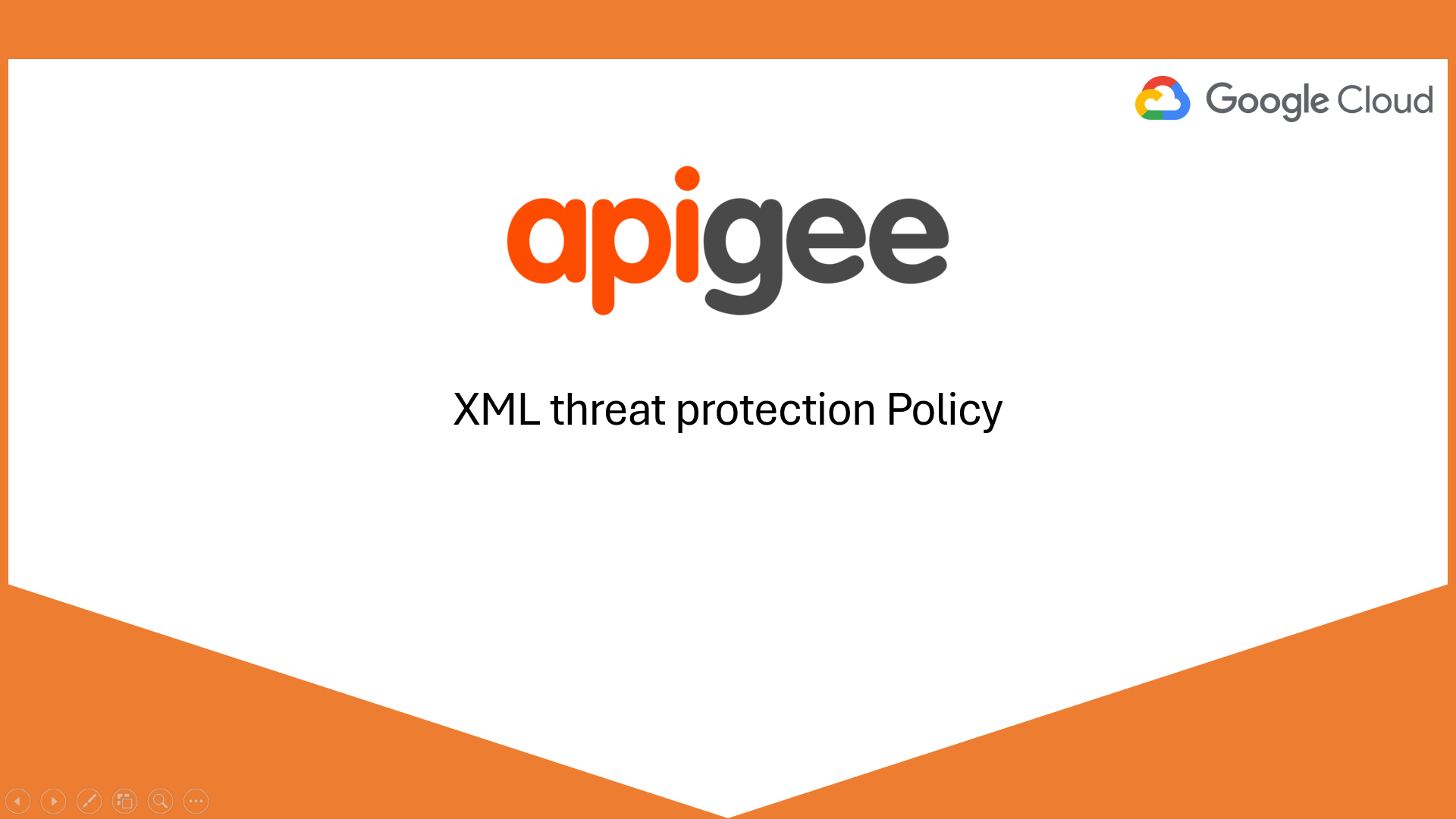
This policy detects XML payload attacks based on the configured limits on XML message parts.
When the message is received from the client or other system, Content-Type should be application/XML, if it is not, a policy is not enforced on that message.
Scenario:
- To destabilize the system, hackers may send Large and complex XML messages to the service.
- It uses more memory and CPU, and XML parsers cannot handle this kind of message.
- This results in the termination of the service.
These attacks can be mitigated if the service uses XML Threat protection policy.
XML Configuration file - XML Threat Protection Policy
<XMLThreatProtection continueOnError="false" enabled="true" name="XML-Threat-Protection-1">
<DisplayName>XML Threat Protection-1</DisplayName>
<Properties/>
<NameLimits><!-- it will specify Element length, Attribute length, NamespacePrefix
length, ProcessingInstructionTarget should be 10 or within 10-->
<Element>10</Element>
<Attribute>10</Attribute>
<NamespacePrefix>10</NamespacePrefix>
<ProcessingInstructionTarget>18</ProcessingInstructionTarget>
</NameLimits>
<!-- Source: from where we are getting the XML message. ie request-->
<Source>request</Source>
<StructureLimits>
<!-- length of the node structure should not excceed 5-->
<NodeDepth>5</NodeDepth>
<!-- Attribute Count Per Element should be 2 or less than 2.
similarly,Namespace Count Per Element -->
<AttributeCountPerElement>2</AttributeCountPerElement>
<NamespaceCountPerElement>3</NamespaceCountPerElement>
<ChildCount includeComment="true" includeElement="true" includeProcessingInstruction="true" includeText="true">3</ChildCount>
</StructureLimits>
<ValueLimits>
<!-- it will check the size of values inside Text, Attribute, NamespaceURI
, Comment, ProcessingInstructionData-->
<Text>15</Text> <!-- element value shlould be 15 or within 15-->
<Attribute>10</Attribute>
<NamespaceURI>40</NamespaceURI>
<Comment>10</Comment>
<ProcessingInstructionData>40</ProcessingInstructionData>
</ValueLimits>
</XMLThreatProtection>
Sample XML data:
<BillInfo xmlns:xsi="http://www.w3.org/2001/XMLSchema-instance">
<BillNumber>8888</BillNumber>
<BillDate>2022-07-28</BillDate>
<BillTime>10:36:55.03</BillTime>
<BillerDetails code="9836" name="string">Jane</BillerDetails>
<Customer>
<Name>abc</Name>
<Phone>7483824106</Phone>
<Mail>nkptech@gmail.com</Mail>
<Address>
<Street_Addr1>Bay area</Street_Addr1>
<Street_Addr2>5th cross</Street_Addr2>
<PostCode>A84HJK</PostCode>
<Country>USA</Country>
</Address>
</Customer>
</BillInfo>
<!-- <BillInfo>, <BillNumber>, <BillDate>,.... are all Elements
code="9836", name="string", .. Attributes
xmlns:xsi .. NamespacePrefix
href="xsl_for_each.xsl" .. ProcessingInstructionTarget-->
<!-- NodeDepth: length of the node structure -->
<!-- AttributeCountPerElement: <BillerDetails code="9836" name="string"> is 2 -->
<!-- NamespaceCountPerElement: <BillInfo xmlns:xsi="http://www.w3.org/2001/XMLSchema-instance">
<!-- ChildCount(number of child nodes inside noded): including Comments including Elements inside it -->
Implement policy in Apigee.
Create no target API proxy.
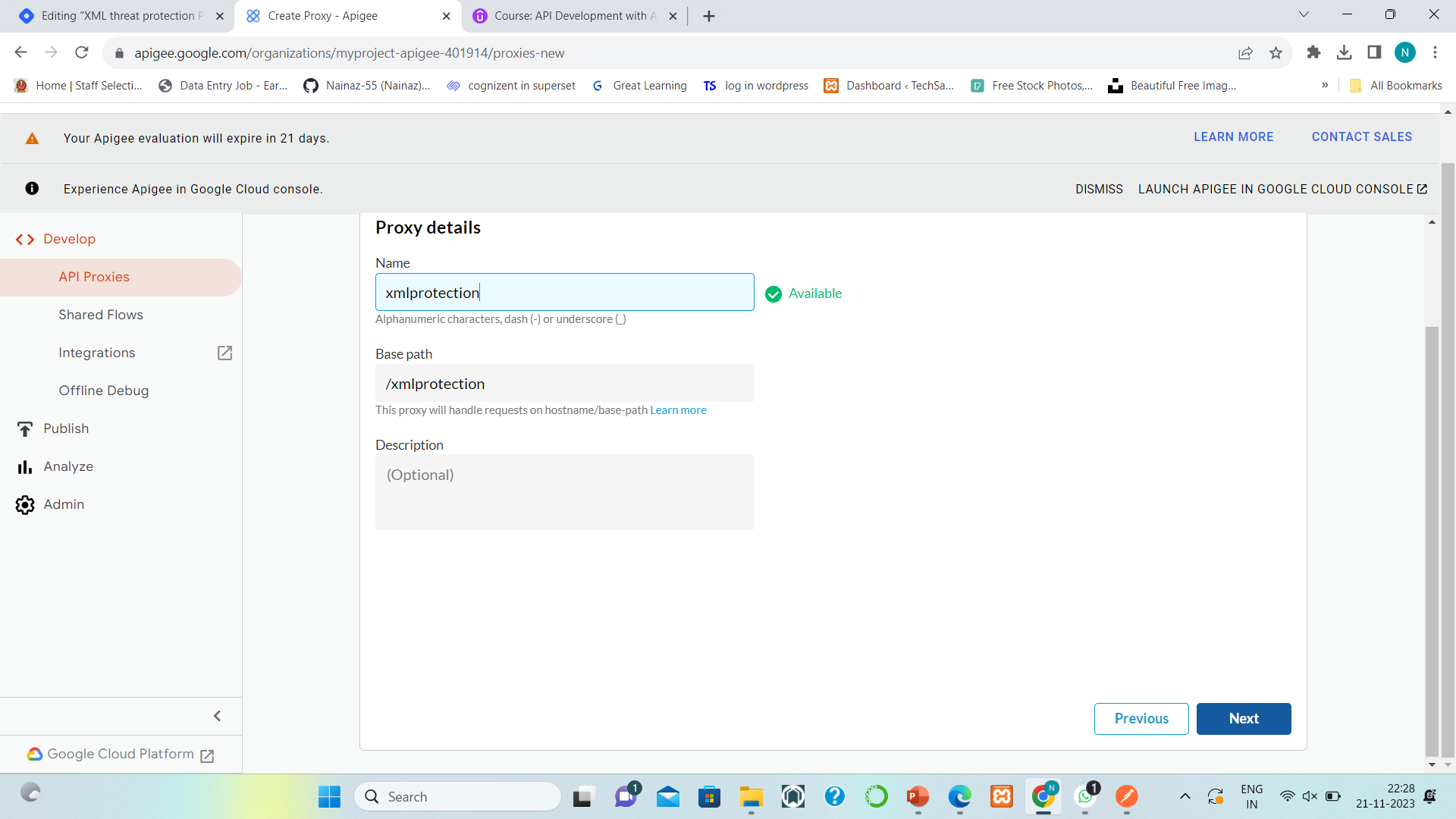
create and deploy - edit proxy - develop
we need to validate when the request will come.
proxy endpoint - preflow - request - add XML threat protection policy.
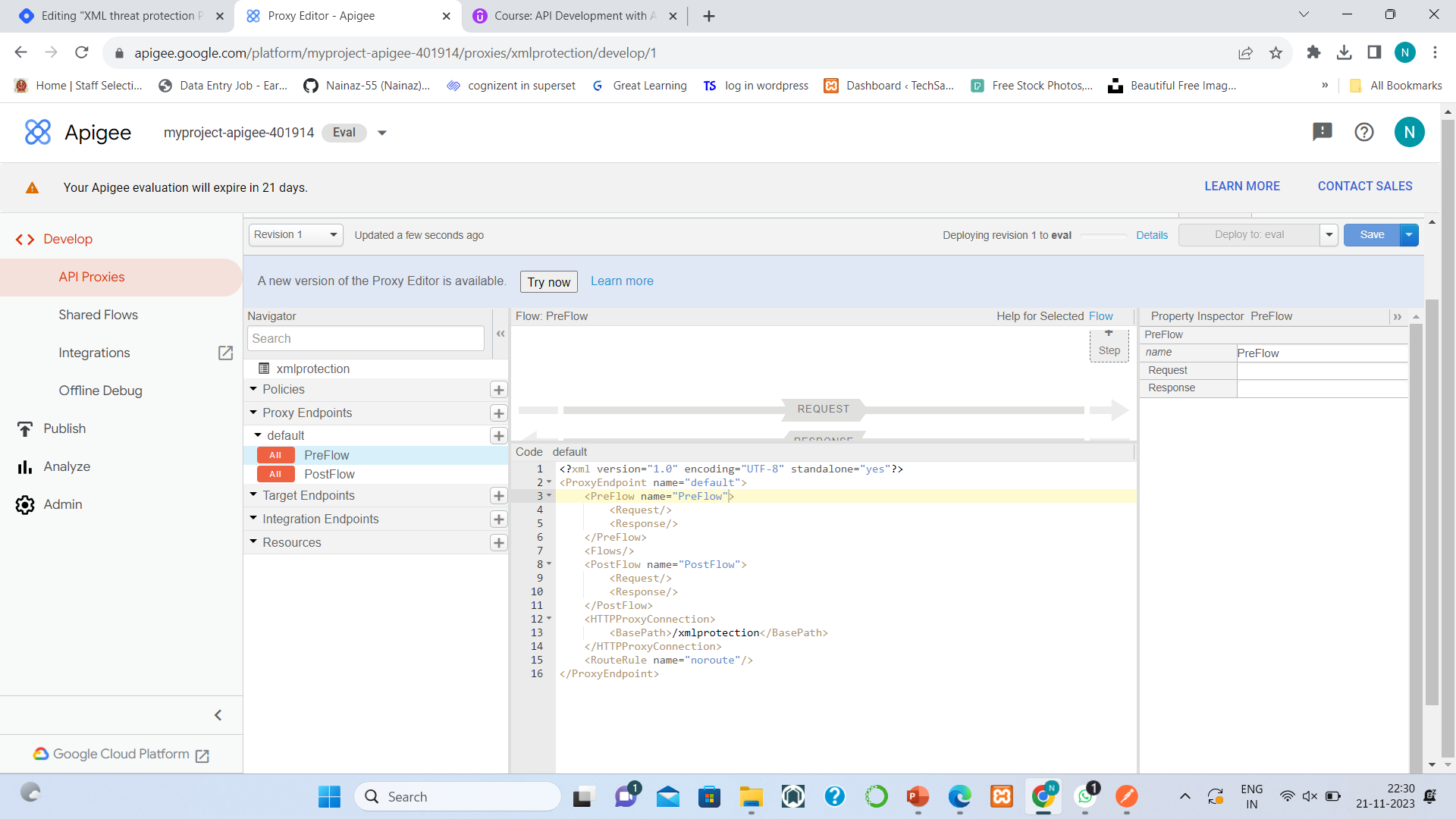
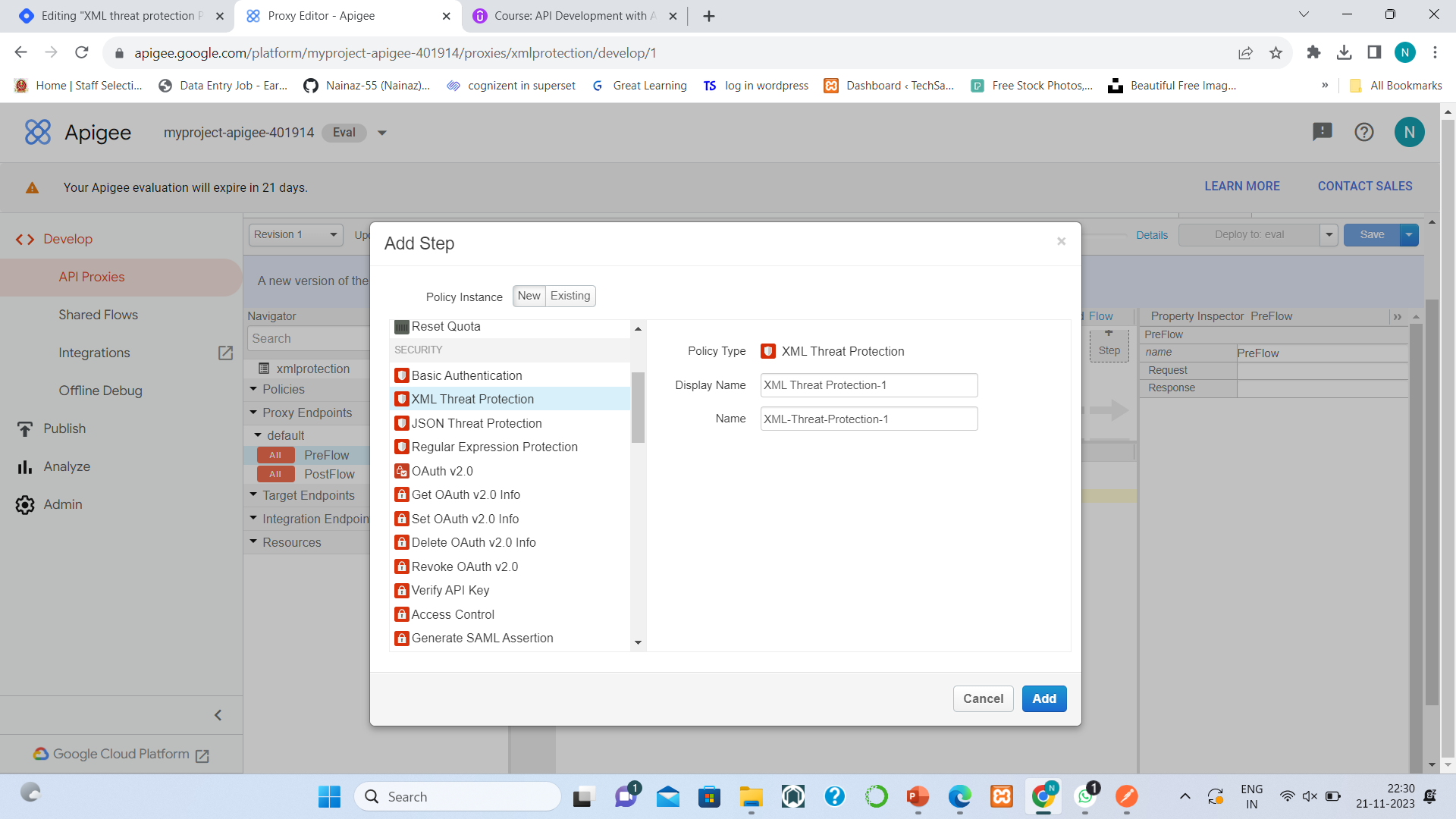
XML threat protection policy code should look like below. save and deploy
<?xml version="1.0" encoding="UTF-8" standalone="yes"?>
<XMLThreatProtection continueOnError="false" enabled="true" name="XML-Threat-Protection-1">
<DisplayName>XML Threat Protection-1</DisplayName>
<Properties/>
<NameLimits>
<Element>10</Element>
<Attribute>10</Attribute>
<NamespacePrefix>10</NamespacePrefix>
<ProcessingInstructionTarget>18</ProcessingInstructionTarget>
</NameLimits>
<Source>request</Source>
<StructureLimits>
<NodeDepth>5</NodeDepth>
<AttributeCountPerElement>2</AttributeCountPerElement>
<NamespaceCountPerElement>3</NamespaceCountPerElement>
<ChildCount includeComment="true" includeElement="true" includeProcessingInstruction="true" includeText="true">3</ChildCount>
</StructureLimits>
<ValueLimits>
<Text>15</Text>
<Attribute>10</Attribute>
<NamespaceURI>40</NamespaceURI>
<Comment>10</Comment>
<ProcessingInstructionData>40</ProcessingInstructionData>
</ValueLimits>
</XMLThreatProtection>
See the output
Send POST request with sample XML data.
<!-- sample XML data -->
<?xml-stylesheet type="text/xsl "href="xsl_for_each.xsl" ?>
<BillInfo xmlns:xsi="http://www.w3.org/2001/XMLSchema-instance">
<BillNumber>8888</BillNumber>
<BillDate>2022-07-28</BillDate>
<BillTime>10:36:55.03</BillTime>
<BillerDetails code="9836" name="string">Jane</BillerDetails>
<Customer>
<Name>abc</Name>
<Phone>7483824106</Phone>
<Mail>nkptech@gmail.com</Mail>
<Address>
<Street_Addr1>Bay area</Street_Addr1>
<Street_Addr2>5th cross</Street_Addr2>
<PostCode>A84HJK</PostCode>
<Country>USA</Country>
</Address>
</Customer>
</BillInfo>
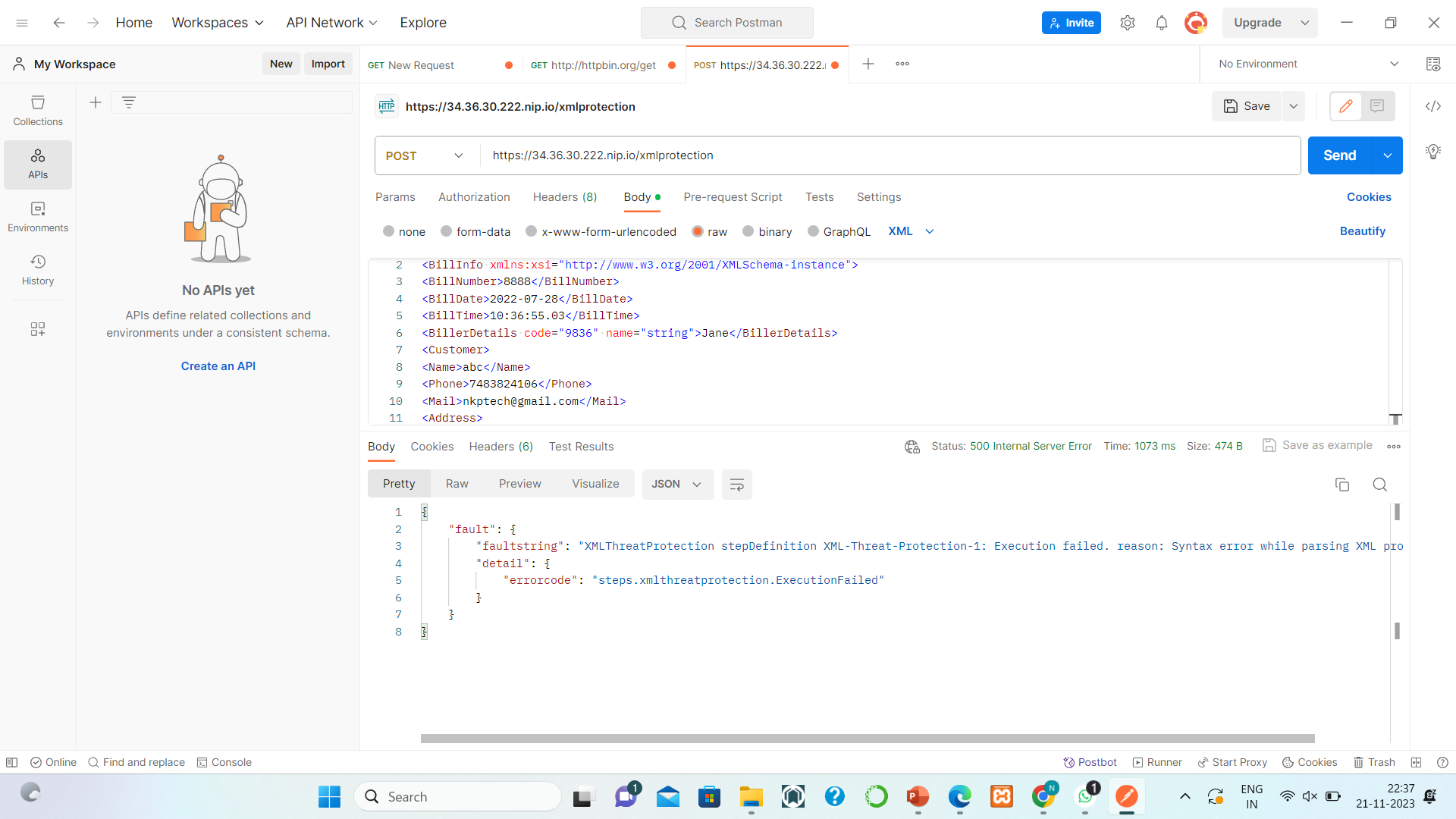
we are getting errors.
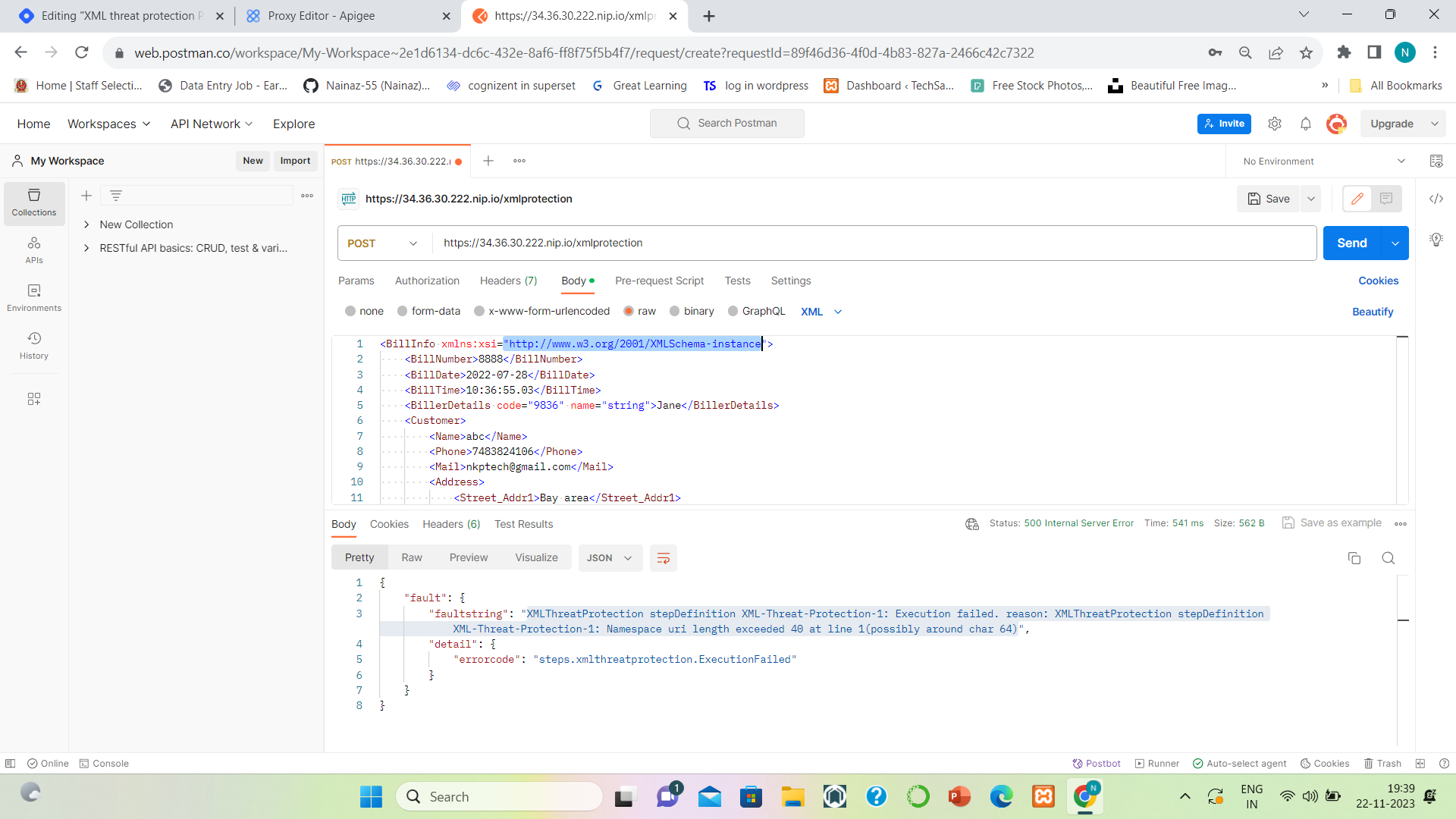
Because: Namespace uri length exceeded 40 at line 1(possibly around char 64)
So, the length of the namespace URI should be less than 40. modify it<BillInfo xmlns:xsi="http://www.w3.org/2001/XMLSchema-instance">
TO<BillInfo xmlns:xsi="http://www.w3.org/2001/XML">
send the request again.
Got the error:
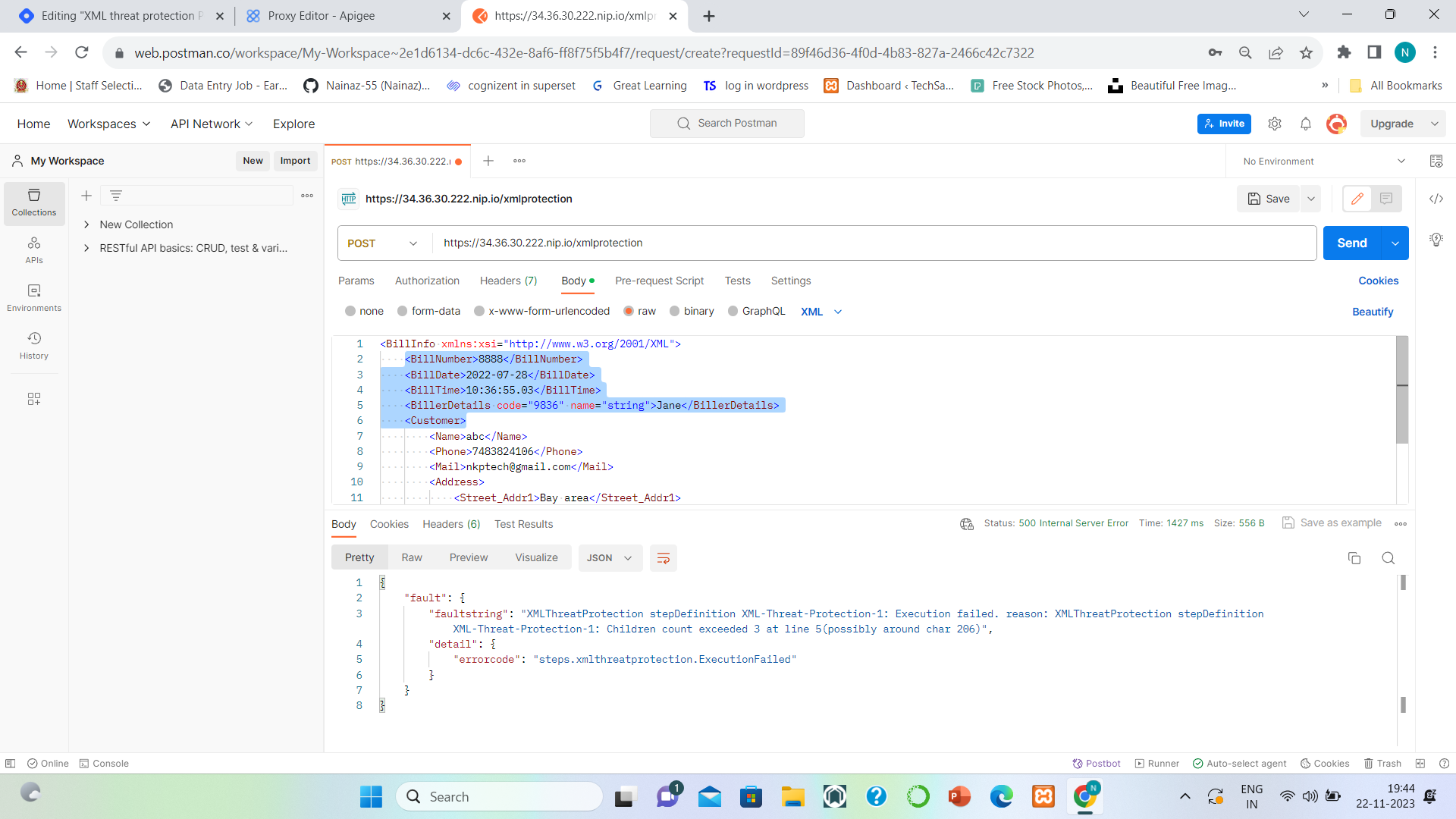
Execution failed. reason: Children's count exceeded 3
delete some child elements.<BillNumber>8888</BillNumber> <BillDate>2022-07-28</BillDate>
Code looks like
<BillInfo xmlns:xsi="http://www.w3.org/2001/XML">
<BillTime>10:36:55.03</BillTime>
<BillerDetails code="9836" name="string">Jane</BillerDetails>
<Customer>
<Name>abc</Name>
<Phone>7483824106</Phone>
<Mail>nkptech@gmail.com</Mail>
<Address>
<Street_Addr1>Bay area</Street_Addr1>
<Street_Addr2>5th cross</Street_Addr2>
<PostCode>A84HJK</PostCode>
<Country>USA</Country>
</Address>
</Customer>
</BillInfo>
After modifying the Sample XML code based on the XML threat protection needs.
Code looks like.
<BillInfo xmlns:xsi="http://www.w3.org/2001/XML">
<BillTime>10:36:55.03</BillTime>
<Biller code="9836" name="string">Jane</Biller>
<Customer>
<Name>abc</Name>
<Phone>7483824106</Phone>
<Address>
<Strdr1>Bay area</Strdr1>
<PostCode>A84HJK</PostCode>
<Country>USA</Country>
</Address>
</Customer>
</BillInfo>
Output is.
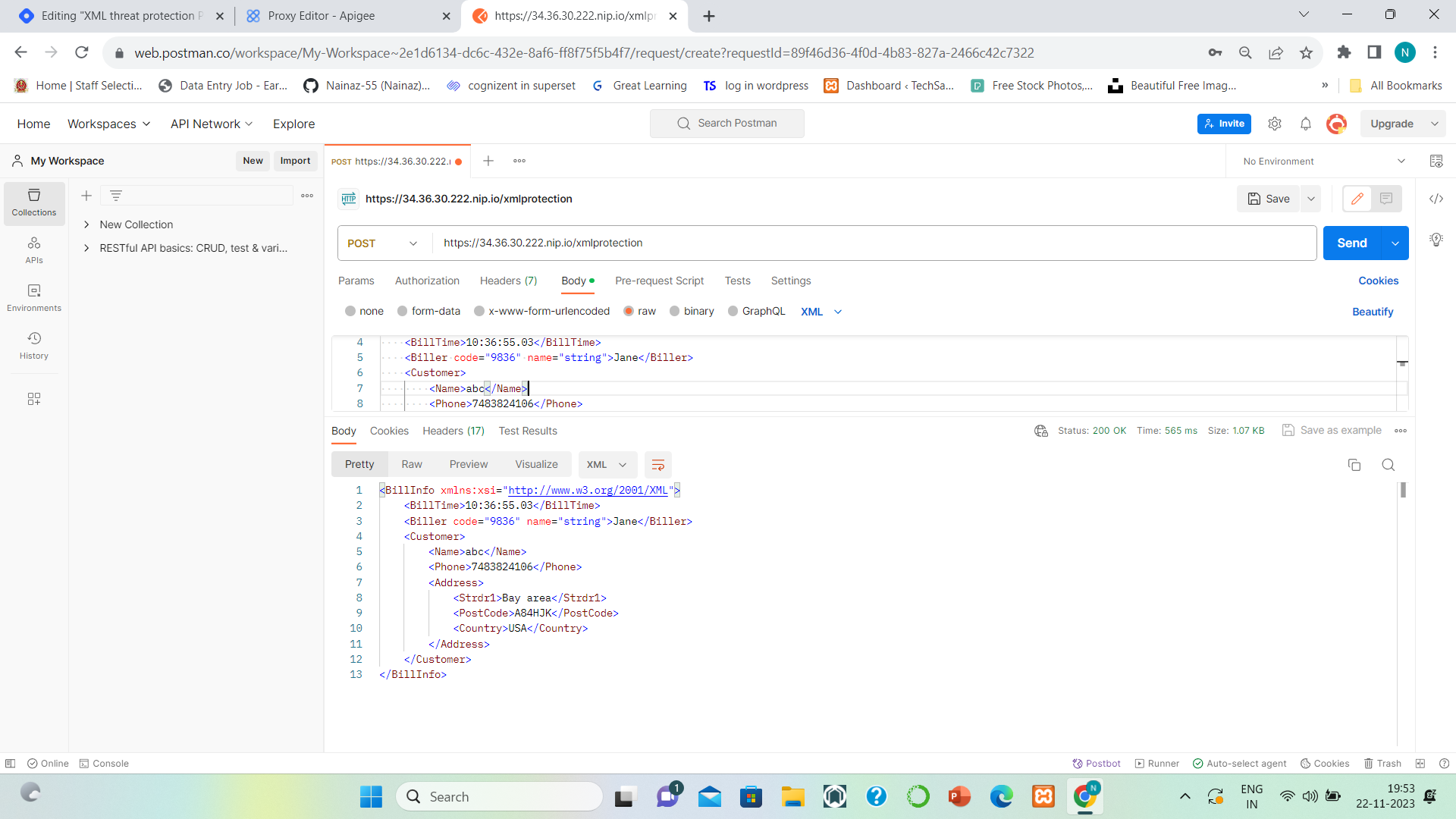
Subscribe to my newsletter
Read articles from Nainaz directly inside your inbox. Subscribe to the newsletter, and don't miss out.
Written by
